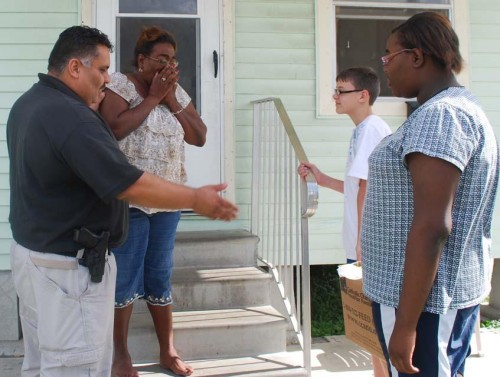Tuesday, Nov. 30
November 30, 2010
HPD reaches out to area’s needy with food boxes
December 2, 2010The Federal Interagency Solutions Group, under the establishment of the U.S. Coast Guard and direction of the National Incident Command, has released a peer-reviewed report detailing adjustments to scientific calculations on oil level measurements in the Gulf of Mexico following the explosion and spill of the BP Deepwater Horizon oil rig on April 20.
During a conference call last Tuesday, Dr. Jane Lubchenco, under secretary of commerce for oceans and atmosphere and administrator with the National Oceanic and Atmospheric Administration, said the report was not intended to make conclusions, but was a matter of adjusting numbers.
“The report refines the [original] estimates [and] reaffirms most of the numbers released in August,” Lubchenco said. “Where there were changes they came in areas that were purposely conservative.”
Lubchenco said the most notable change, in what was referred to as the oil budget calculator, saw an increase in the estimate in disbursed oil. According to the report, an original estimate of 8 percent of the oil being naturally disbursed was increased to 16 percent.
When the oil budget calculator was initially introduced in August, scientists estimated that 26 percent of the released oil had been left as a residual. The new estimate for residual oil, according to Lubchenco, is at 23 percent. This designation was listed as “other” on the official report.
The 217-page report listed no changes in the estimate of released oil that was directly recovered, which stands at 17 percent. In addition, numbers did not change for the 5 percent of oil burned and the 3 percent of oil skimmed during the time from the August report to the newest findings.
Scientists claim that 25 percent of the spilled oil either evaporated or was dissolved in the water currents of the Gulf.
“Overall this oil budget report is quite close to that completed in the heat of the response,” Lubchenco said. “The oil budget is an example of our commitment to scientific transparency and accountability. The refined budget … and the full technical documentation should add confidence in our original findings.”
But not everybody is confident in the activities government agencies have been exercising, and some contend that study after study does little to resolve the hard economic and environmental impact experienced along the Gulf Coast because of the largest oil spill in history.
“We are more concerned right now, the communities are, about where the oil still is and the impact it is having on the ecosystem, and how long that will last,” said Marylee Orr, founder of the Louisiana Environmental Action Network.
“This [report] is just another re-evaluation on how much oil was put out there. This is not really addressing the concerns that our communities are facing right now. We need to understand what is happening, what the damage is and how long it will take to recover,” Orr said.
“The sole purpose of the oil budget calculator was to inform the response,” Lubchenco said. “It does not tell us where the oil is today or its final fate. And it does not tell us what the impact of the oil was. It simply provides estimates of where the oil went over the initial months of the spill. It is one of the tools used to help inform the response activities.”
“I call this being paralyzed by process,” Orr said. “No one seems able to move forward.”
Lubchenco responded to criticism by stating that scientists conducting research are concerned about the long-term impact the oil spill will have on the Gulf. “We remain committed to holding BP and other responsible parties accountable for damages,” she said.
The oil budget calculator report contained contributions from 15 international academic institutions with their only specific recommendation being that further research should be conducted.








